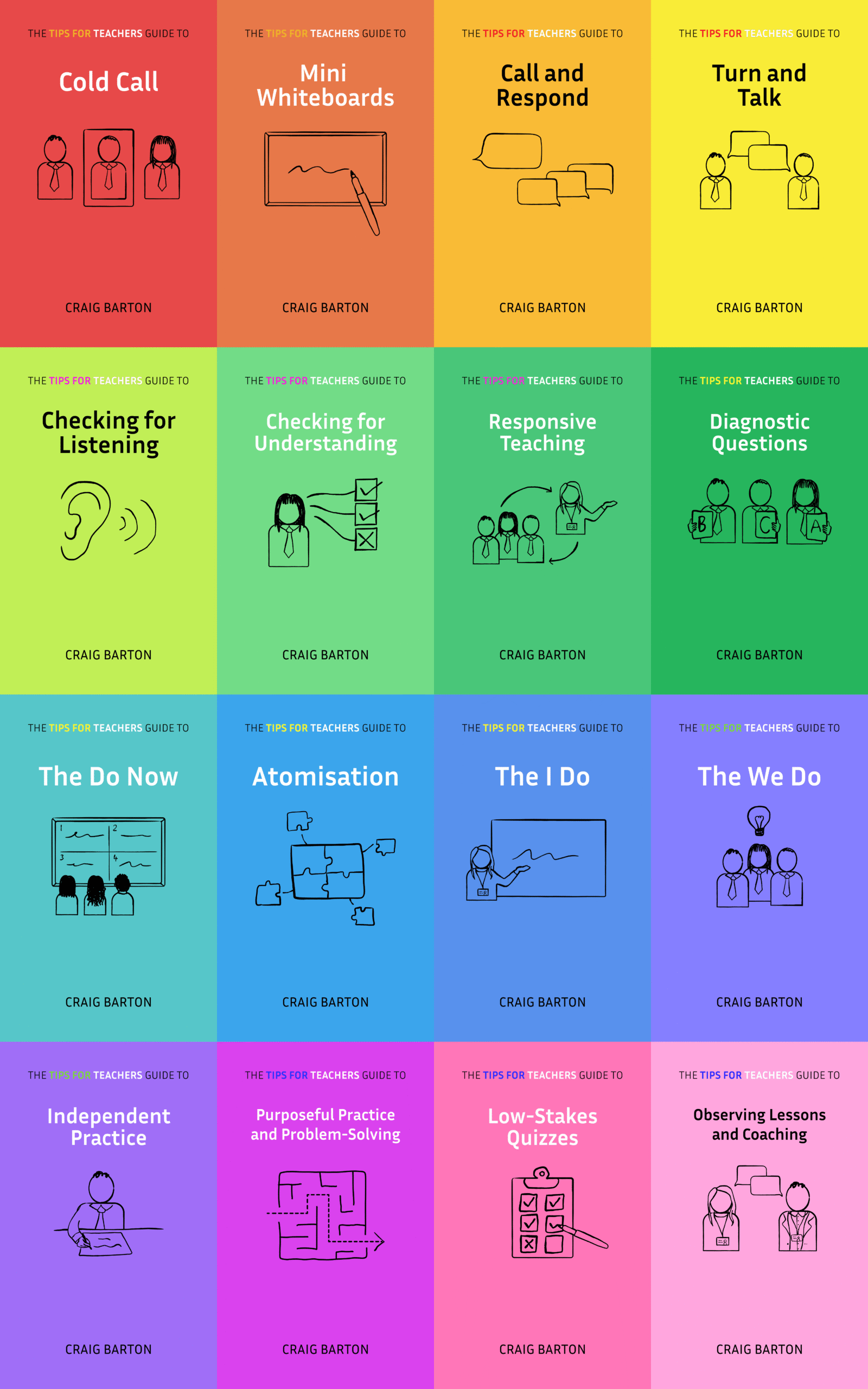You can download my version of the Forgetting Curve here
More tips from Craig Barton
Video transcript
hello i’m craig barton and welcome to this tips for teachers video now i don’t know about you but often i encounter what i call the vicious cycle of teaching and that’s when we teach something to our students and in the moment they seem to get it and we think oh fantastic but then whether it’s next lesson next week next month whenever it may be they’ve forgotten it so what do we end up doing we teach it to them again and it goes on and on and on and it’s painful for us as teachers and it’s painful for our students as learners as well now fortunately there’s loads of research out there about how we can break this cycle we know that if we provide students with opportunities to retrieve what they’ve been taught in the past over spaced intervals they’re likely to remember it whether you read the carpenter paper the work by the bjorks there’s loads of stuff out there but of course there’s one big barrier standing in the way of the magic power of retrieval kicking in and that is our students themselves because i don’t know if you’ve found this but often students i work with don’t take remembering prior stuff quite as seriously as they take learning new stuff they put all their effort into this new stuff and the old stuff ah they say things like sir we’ve done this before not this again oh but of course we know that it’s retrieving this old stuff that’s going to make it stick so how do we get students to take retrieval seriously well one thing i found particularly powerful is showing them the diagram of the forgetting curve something like this now what i’m going to do is i’m going to describe how i use this diagram with my students the kind of things i say your challenge will be to think how you need to tweak that message to make it hit home for your students knowing them as well as you do so i’m going to jump into mr barton teaching mode now okay you lot right this diagram is one of my all-time favorites because it gives a real clear picture of how our memories work and crucially how we can make them work to our advantage so i’m going to start with some bad news when you learn something for the first time you start to forget it really really really quickly we start sliding down this really steep slope bad news hey but here’s the good news if we revisit that material and you think really hard about it then we start to slow down this rate of forgetting notice how this slope isn’t quite as steep better news still if we revisit it again then look at this slope now it’s even less steep it’s flattening out more and more and we can keep doing this let’s revisit it again and this slope gets even flatter so whenever we do what we’ve done today next lesson in a starter or a do now i want you to think super hard about it because if you think hard about it we’re going to start this process of flattening out this slope and then when it pops up in a homework next week i need you to think really hard again because we’re flattening out this slope and then when i include it in a low stakes quiz next month think hard again because we’re going to flatten it out and if we can keep doing this for all the stuff that we study we’re not going to forget it so of course you’ll tweet the message accordingly but something like that backed up with a visual that’s really easy to understand i think can be super powerful and i’ve been lucky enough to use this with primary school students right up to year 13 further mathematicians and i think it’s about the best way i’ve found of getting students to appreciate the importance of retrieving prior knowledge so what do you reckon how would you use this tip what language would you need to use what changes would you need to make if you found this useful i’d be so grateful if you could like this video and subscribe to the teachers for tips youtube channel also visit teachersfortips.co.uk for more little tips like this thanks so much for watching









